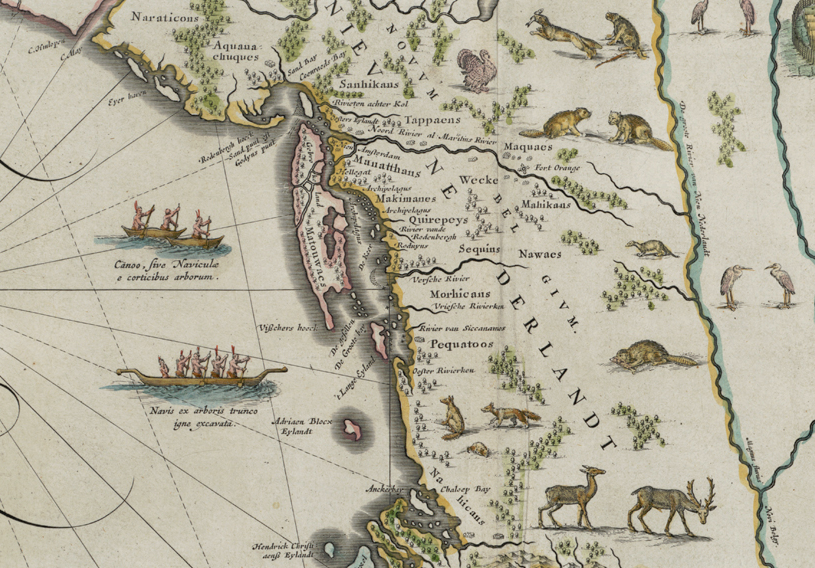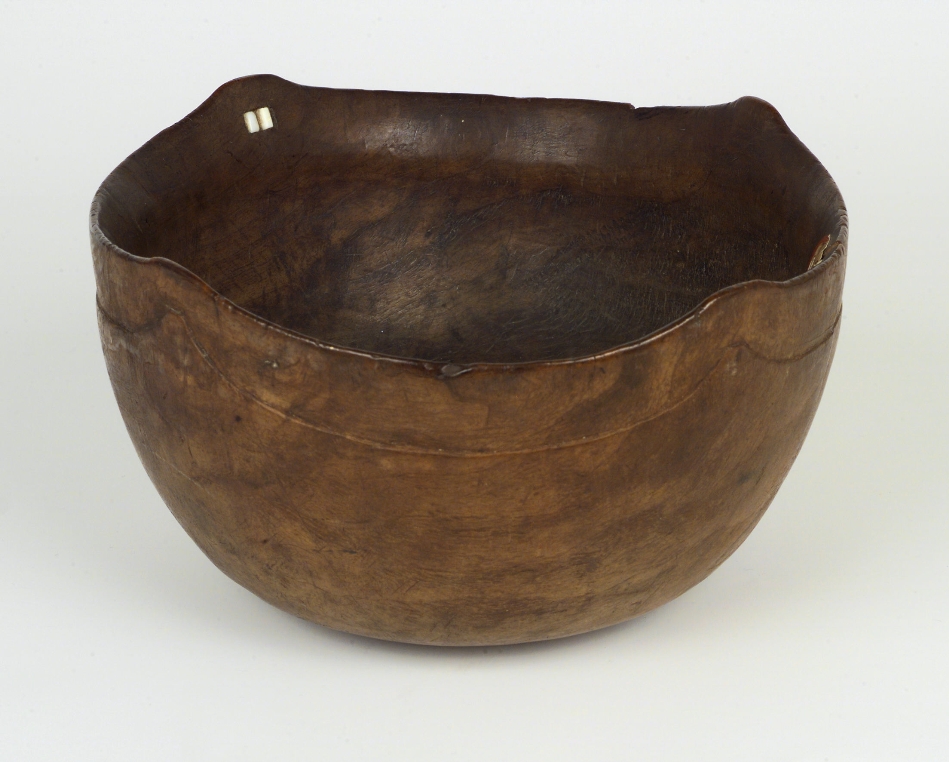The outbreak of the Pequot War (1636-37) is best understood through an examination of the cultural, political, and economic changes that occurred after the arrival of the Dutch in 1611 and the English in the early 1630s.
Traditionally and historically Pequot territory before the time of the war consisted of approximately 250 square miles in southeastern Connecticut. Today, this area includes the towns of Groton, Ledyard, Stonington, and North Stonington, as well as southern portions of Preston and Griswold. The Thames and Pawcatuck Rivers formed the western and eastern boundaries, Long Island Sound the southern boundary, and Preston and Griswold the northern boundary. Some historic sources suggest that Pequot territory extended 4 to 5 miles east of the Pawcatuck River to an area called Weekapaug in Charlestown, Rhode Island. During the early 17th century approximately 8,000 Pequot men, women, and children lived within this territory. Following the smallpox epidemics of 1633 and ’34, their number fell to an estimated 4,000. Communities of 50 to 400 people resided in 15 to 20 villages located along Long Island Sound and the estuaries of the Thames, Mystic, and Pawcatuck Rivers.
Tensions Rise as Different Parties Seek Control of Trade
During the 1620s the Dutch and Pequot controlled all trade in the region as the Pequot attempted to subjugate other tribes throughout Connecticut and the islands offshore. By 1635, the Pequot extended their political and economic ties through a tributary confederacy using coercion, warfare, diplomacy, and intermarriage. This created a potentially volatile situation.

Detail from Nova Belgica et Anglia Nova by Willem Janszoon Blaeu, ca. 1635. Based on the 1614 explorations of Adrian Block – Boston Public Library, Norman B. Leventhal Map Center
With the arrival of English traders and settlers in the Connecticut River Valley in the early 1630s, the balance shifted, resulting in conflict and intense competition for power as tribes wrested themselves from Pequot subjugation. This struggle to gain—or maintain—control fueled the outbreak of war. The English tried to break the Dutch-Pequot control of trade, while the Pequot attempted to maintain their political and economic dominance in the region. The murders of English traders are often cited as the cause for the Pequot War; however, these deaths were the culmination of decades of tension between Native tribes further stressed by the arrival of the Dutch and English.
Trader and privateer John Stone and his crew were killed by the Pequot in the summer of 1634 on the Connecticut River. Although the Pequot provided several explanations for Stone’s death, all of which suggested they viewed their actions as justified, the English decided they could not afford to let any English deaths at the hands of Natives go unpunished. As tensions grew among all parties, the murder of trader John Oldham in July 1636 by the Manisses of Block Island resulted in a military response by the English of the Massachusetts Bay Colony. This action, led by Captain John Endicott, sparked a cycle of escalating retaliation—and signaled the start of what is now known as the Pequot War, a Euro-centric interpretation of a conflict that was as much Native vs. Native as it was English vs. Native.
Contributed by staff for the Mashantucket Pequot Museum & Research Center’s Battlefields of the Pequot War project.









